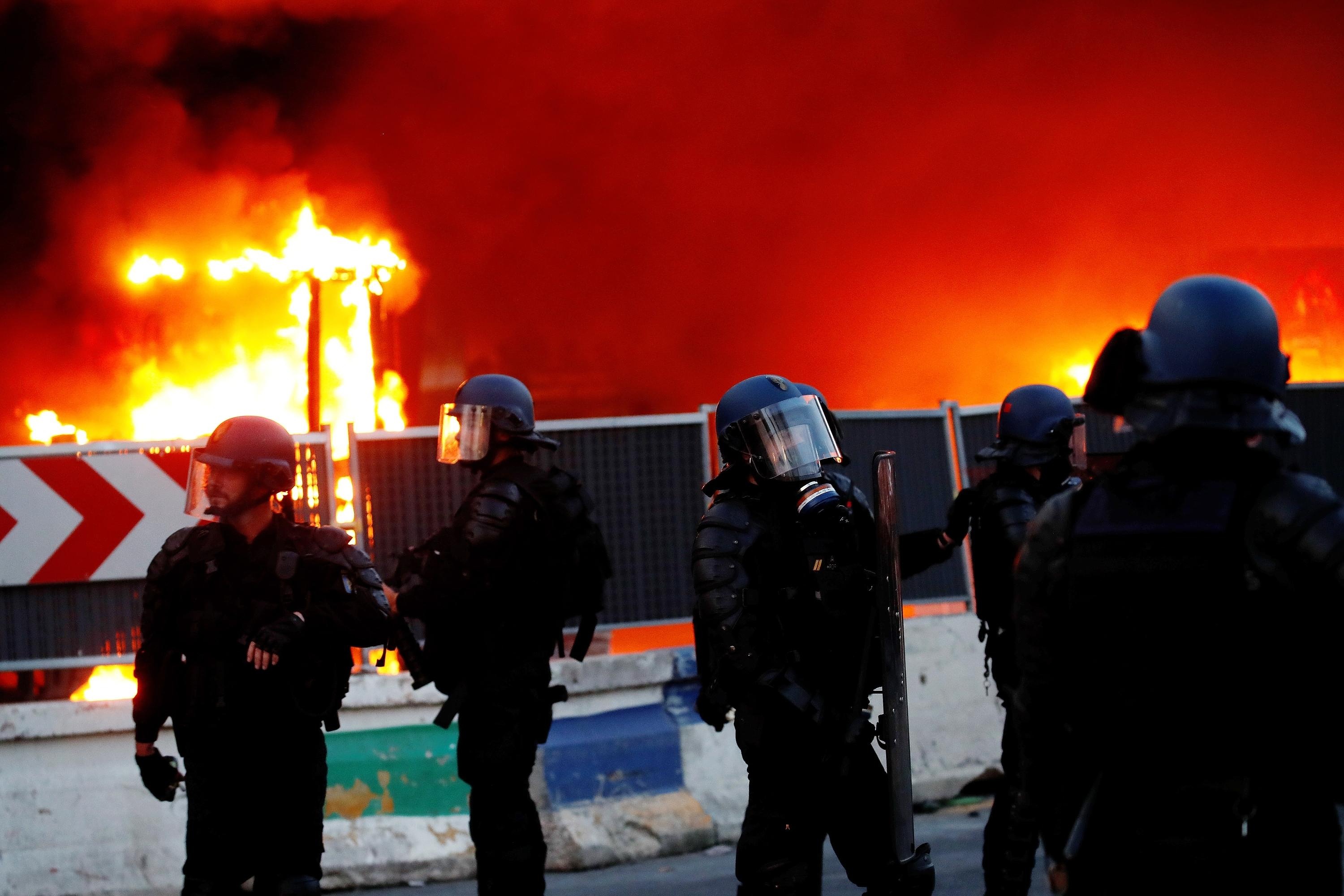This area was long considered stable and not affected by climate change.
Satellite images captured the collapse. This was the first time that an ice shelf had collapsed in the region. It occurred during a rare warm spell in East Antarctica last week, when temperatures rose more than 70° (40 Celsius). Satellite photos have shown that the area has been shrinking rapidly over the past couple of years. Scientists now wonder if they are underestimating East Antarctica’s stability and resistance to global warming, which has been melting ice quickly on the western side and vulnerable peninsula.
Catherine Walker, an ice scientist at the Woods Hole Oceanographic Institute, said that the ice shelf covering 460 miles (1200 km) was responsible for holding in the Conger glaciers and Glenzer glaciers from warmer waters. It collapsed between March 14-16. This is a first for scientists in this region of the continent, she said. It is alarming.
Peter Neff, University of Minnesota Ice Scientist, stated that "The Glenzer Conger glacier shelf presumably was there for thousands of centuries and it's never going to be there again."
Neff and Walker stated that the issue is not the amount of ice that was lost during this collapse. It is negligible. It is more about where it happened.
Neff stated that he is concerned about the possibility of incorrect assumptions being made about East Antarctica's stability. This is important because sea levels around the world could rise to 160 feet (50m) if the East Antarctica water freezes. It is five times more than the ice in West Antarctic Ice Sheet where scientists have done most of their research.
Helen Amanda Fricker, codirector of Scripps Polar Center, University of California San Diego said that researchers need to spend more time studying this part of the continent.
"East Antarctica is beginning to change. Fricker stated that mass loss is already happening. "We must know the stability of each ice shelf because if one is gone, it means that glaciers melt into the warm water. This could lead to "some of that water coming to San Diego" and other areas.
Neff stated that scientists had seen this particular ice shelf, which is closest to Australia, shrink slightly since the 1970s. Walker stated that the shelf lost about half its ice each month in 2020.
Walker stated that "we probably are seeing the results of a lot long-term increased ocean heating there." It's melting and melting.
One expert still believes that East Antarctica is the only concern.
Rob Larter, British Antarctic Survey geophysicist, stated that most of East Antarctica was relatively safe and invulnerable. However there are some areas that are more vulnerable. "The general effect of climate change in East Antarctica is that it's reducing the ice sheets' edges in certain places but adding more snow to their middle."
An atmospheric river, also known as warm air, dumped a lot more heat -- and even rain -- onto parts of East Antarctica last week. This caused temperatures to soar that scientists spent the week discussing it. Australia's Casey Station is the closest station to the collapsed shelf. It was located 180 miles (300 km) away. The temperature reached 42 degrees Celsius, which was approximately 18 degrees (10 Celsius) higher than normal.
Walker stated that this was "probably something like, you're aware, the last straw on a camel's back."
Fricker, who had previously explored an East Antarctic ice shelf that was more stable, stated that the ice shelf there is "the quietest and most serene place you could imagine."

 What is chloropicrin, the chemical agent that Washington accuses Moscow of using in Ukraine?
What is chloropicrin, the chemical agent that Washington accuses Moscow of using in Ukraine? Poland, big winner of European enlargement
Poland, big winner of European enlargement In Israel, step-by-step negotiations for a ceasefire in the Gaza Strip
In Israel, step-by-step negotiations for a ceasefire in the Gaza Strip BBVA ADRs fall almost 2% on Wall Street
BBVA ADRs fall almost 2% on Wall Street Children born thanks to PMA do not have more cancers than others
Children born thanks to PMA do not have more cancers than others Breast cancer: less than one in two French women follow screening recommendations
Breast cancer: less than one in two French women follow screening recommendations “Dazzling” symptoms, 5,000 deaths per year, non-existent vaccine... What is Lassa fever, a case of which has been identified in Île-de-France?
“Dazzling” symptoms, 5,000 deaths per year, non-existent vaccine... What is Lassa fever, a case of which has been identified in Île-de-France? Sánchez cancels his agenda and considers resigning: "I need to stop and reflect"
Sánchez cancels his agenda and considers resigning: "I need to stop and reflect" “Amazon product tester”: the gendarmerie warns of this new kind of scam
“Amazon product tester”: the gendarmerie warns of this new kind of scam “Unjustified allegations”, “promotion of illicit products”… Half of the influencers controlled in 2023 caught by fraud repression
“Unjustified allegations”, “promotion of illicit products”… Half of the influencers controlled in 2023 caught by fraud repression Extension of the RER E: Gabriel Attal welcomes a “popular” ecology project
Extension of the RER E: Gabriel Attal welcomes a “popular” ecology project WeWork will close 8 of its 20 shared offices in France
WeWork will close 8 of its 20 shared offices in France “We were robbed of this dignity”: Paul Auster’s wife denounces the betrayal of a family friend
“We were robbed of this dignity”: Paul Auster’s wife denounces the betrayal of a family friend A masterclass for parents to fill in their gaps before Taylor Swift concerts
A masterclass for parents to fill in their gaps before Taylor Swift concerts Jean Reno publishes his first novel Emma on May 16
Jean Reno publishes his first novel Emma on May 16 Cannes Film Festival: Meryl Streep awarded an honorary Palme d’Or
Cannes Film Festival: Meryl Streep awarded an honorary Palme d’Or Omoda 7, another Chinese car that could be manufactured in Spain
Omoda 7, another Chinese car that could be manufactured in Spain BYD chooses CA Auto Bank as financial partner in Spain
BYD chooses CA Auto Bank as financial partner in Spain Tesla and Baidu sign key agreement to boost development of autonomous driving
Tesla and Baidu sign key agreement to boost development of autonomous driving Skoda Kodiaq 2024: a 'beast' plug-in hybrid SUV
Skoda Kodiaq 2024: a 'beast' plug-in hybrid SUV The home mortgage firm rises 3.8% in February and the average interest moderates to 3.33%
The home mortgage firm rises 3.8% in February and the average interest moderates to 3.33% This is how housing prices have changed in Spain in the last decade
This is how housing prices have changed in Spain in the last decade The home mortgage firm drops 10% in January and interest soars to 3.46%
The home mortgage firm drops 10% in January and interest soars to 3.46% The jewel of the Rocío de Nagüeles urbanization: a dream villa in Marbella
The jewel of the Rocío de Nagüeles urbanization: a dream villa in Marbella Facing Jordan Bardella, the popularity match turns to Gabriel Attal’s advantage
Facing Jordan Bardella, the popularity match turns to Gabriel Attal’s advantage Europeans: a senior official on the National Rally list
Europeans: a senior official on the National Rally list Blockade of Sciences Po: the right denounces a “drift”, the government charges the rebels
Blockade of Sciences Po: the right denounces a “drift”, the government charges the rebels Even on a mission for NATO, the Charles-de-Gaulle remains under French control, Lecornu responds to Mélenchon
Even on a mission for NATO, the Charles-de-Gaulle remains under French control, Lecornu responds to Mélenchon These French cities that will boycott the World Cup in Qatar
These French cities that will boycott the World Cup in Qatar Champions Cup: Toulouse with Flament and Kinghorn against Harlequins, Ramos replacing
Champions Cup: Toulouse with Flament and Kinghorn against Harlequins, Ramos replacing Tennis: still injured in the arm, Alcaraz withdraws from the Masters 1000 in Rome
Tennis: still injured in the arm, Alcaraz withdraws from the Masters 1000 in Rome Sailing: “Like a house that threatens to collapse”, Clarisse Crémer exhausted and in tears aboard her damaged boat
Sailing: “Like a house that threatens to collapse”, Clarisse Crémer exhausted and in tears aboard her damaged boat NBA: Patrick Beverley loses his temper and throws balls at Pacers fans
NBA: Patrick Beverley loses his temper and throws balls at Pacers fans


















